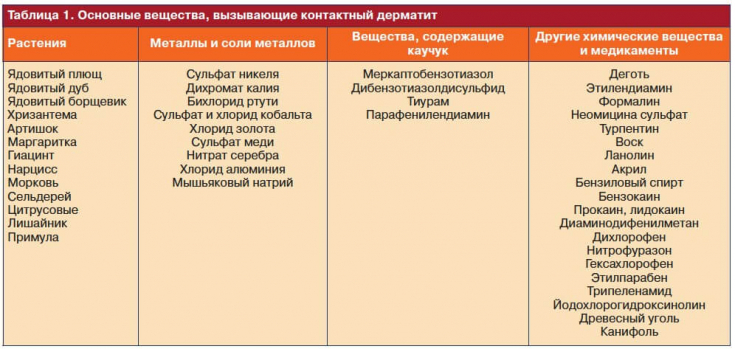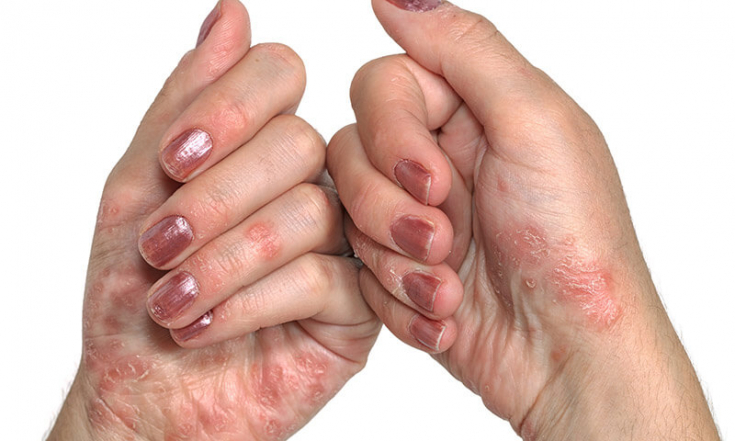Contact dermatitis is common in outpatient practice.
This is an acute or chronic inflammation of the skin due to skin interaction with a chemical, biological, or physical agent.
Contact dermatitis after a single exposure may be irritative or allergic.
Clinically, it is sometimes difficult to distinguish between these processes.
Find out in the article on estet-portal.com what are the main factors causing contact dermatitis, and also modern approaches to the diagnosis and treatment of this disease.
- Classification of contact dermatitis
- Triggers for the development of contact dermatitis
- Risk groups, diagnosis and treatment of contact dermatitisа
Classification of contact dermatitis
Irritant contact dermatitis − the most common type of contact dermatitis, caused by direct injury to the skin after single or repeated exposure to a specific irritant.
Follow us on Instagram!
Irritant contact dermatitis occurs at the site of contact with the irritant on the skin.
If a strong irritant is involved, there may be a rather quick reaction from the skin: pain, swelling, blisters.
When exposed to a mild irritant such as water or soap, the reaction can last for a period of several weeks to several months and present clinically with dryness, itching and fissures on the skin.
Acrodermatitis: Diagnosis and Treatment
Allergic contact dermatitis − the second very common type of contact dermatitis.
Unlike irritative contact dermatitis, the tissue damage in this case is caused by immunological mechanismss.
Allergic contact dermatitis − it is a type IV hypersensitivity reaction that occurs 48-72 hours after exposure to the allergen.
Triggers for the development of contact dermatitis
Potential chemicals that cause contact dermatitis are:
- Metals.
Nickel is found in certain metallic items, such as jewelry, zippers, buttons, buckles and coins.
It can also be found in items such as mobile phones, white gold items, and some orthopedic prostheses.
Nickel allergy is very common among adults and children.
Cobalt is widely used in hygiene products (antiperspirant), hair dyes.
People who are allergic to nickel are often allergic to cobalt.
Chromium salts are used in paint, cement, leather products.
May cause allergic contact dermatitis and sometimes irritant contact dermatitis.

- Aromatic compounds.
These are triggers for allergic contact dermatitis, especially in people with damaged skin.
These compounds are found in cosmetics, perfumes, food flavorings, and toothpastes.
- Antibacterial ointments.
These ointments, such as neomycin and bacitracin, are often used to treat scratches and wounds, but some people may experience allergic reactions.
How to recognize microbial eczema
- Formaldehyde.
This is a preservative that is a strong allergen.
It is found in disinfectants, adhesives, and may be found in personal care products and cosmetics.
May cause allergies in some people.

Risk groups, diagnosis and treatment of contact dermatitis
Contact dermatitis is common in the general population, but certain professional groups are more likely to be affected, for example:
- medical workers;
- beauticians;
- hairdressers;
- employees of industrial enterprises.
Also, the disease is more common in women than in men.
In recent years, acrylate allergy associated with nail cosmetics has also spread.
Typical signs of contact dermatitis − armpits (from deodorants), hands and wrists (contact with metal, work tools, chemicals).
Causes, risk factors and prevention of diaper dermatitis
Contact dermatitis can occur anywhere on the body.
Usually on the face and neck (from skin care products, cosmetics), thighs and legs (from socks, rubber boots, skin ulcer treatments), legs (from metals, rubber, leather, dyes, glue, antimycotics).
Patch tests – the most informative methods for diagnosing allergic contact dermatitis today.

Treatment for contact dermatitis is to ensure that contact with the allergen is avoided or stopped.
For therapeutic purposes, creams based on glucocorticosteroids (GCS), immunosuppressive drugs.
GCS is prescribed once or twice a day until the skin lesions heal, for two to six weeks, depending on the severity of the dermatitis.
All the dermatologist needs to know about topical glucocorticoids
In severe cases of allergic dermatitis, a short course of systemic corticosteroids (prednisolone 20-40 mg once a day for one to two weeks) is prescribed.
If a bacterial infection is associated, antibacterial drugs.
are used in the treatment of contact dermatitis







Add a comment